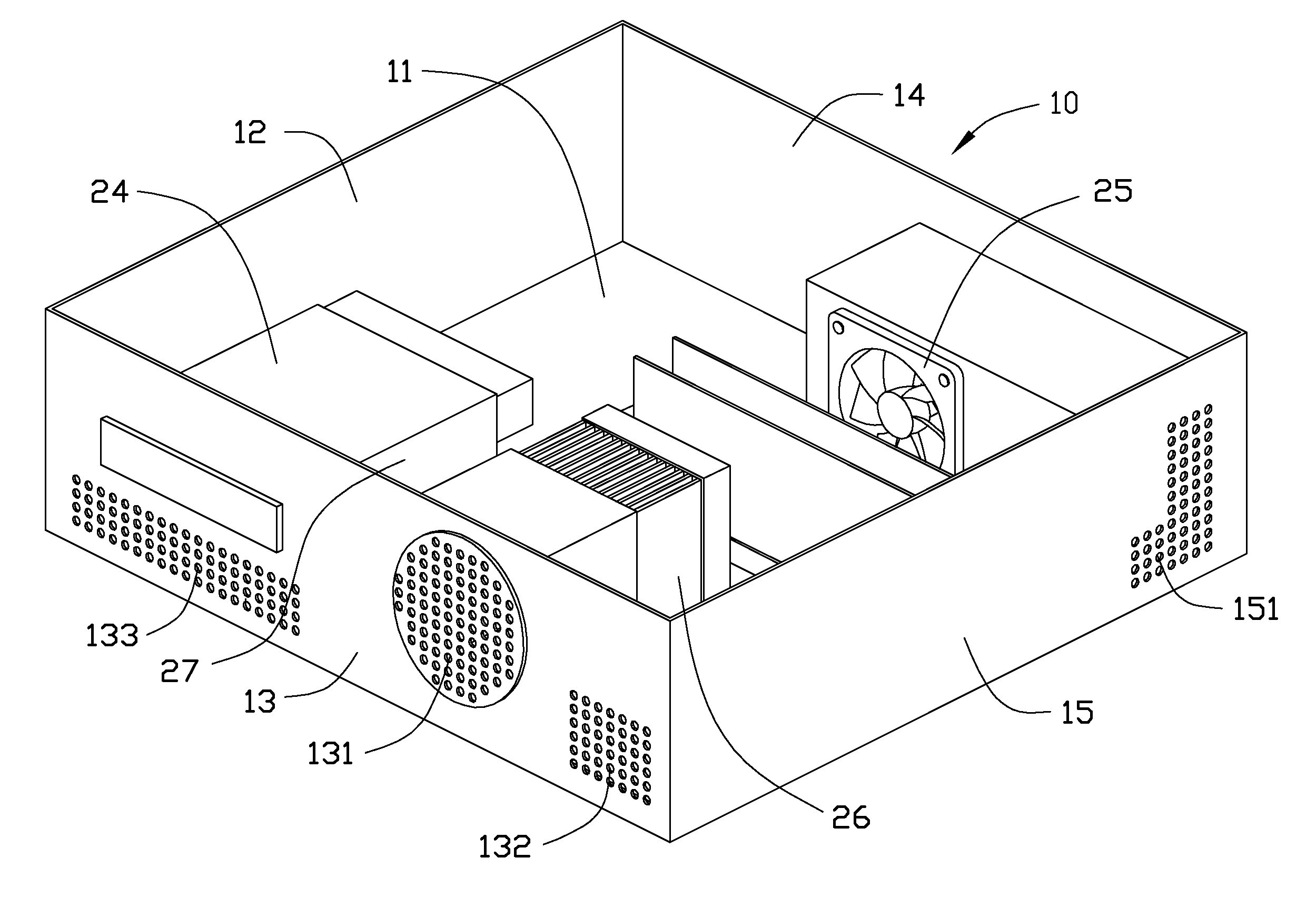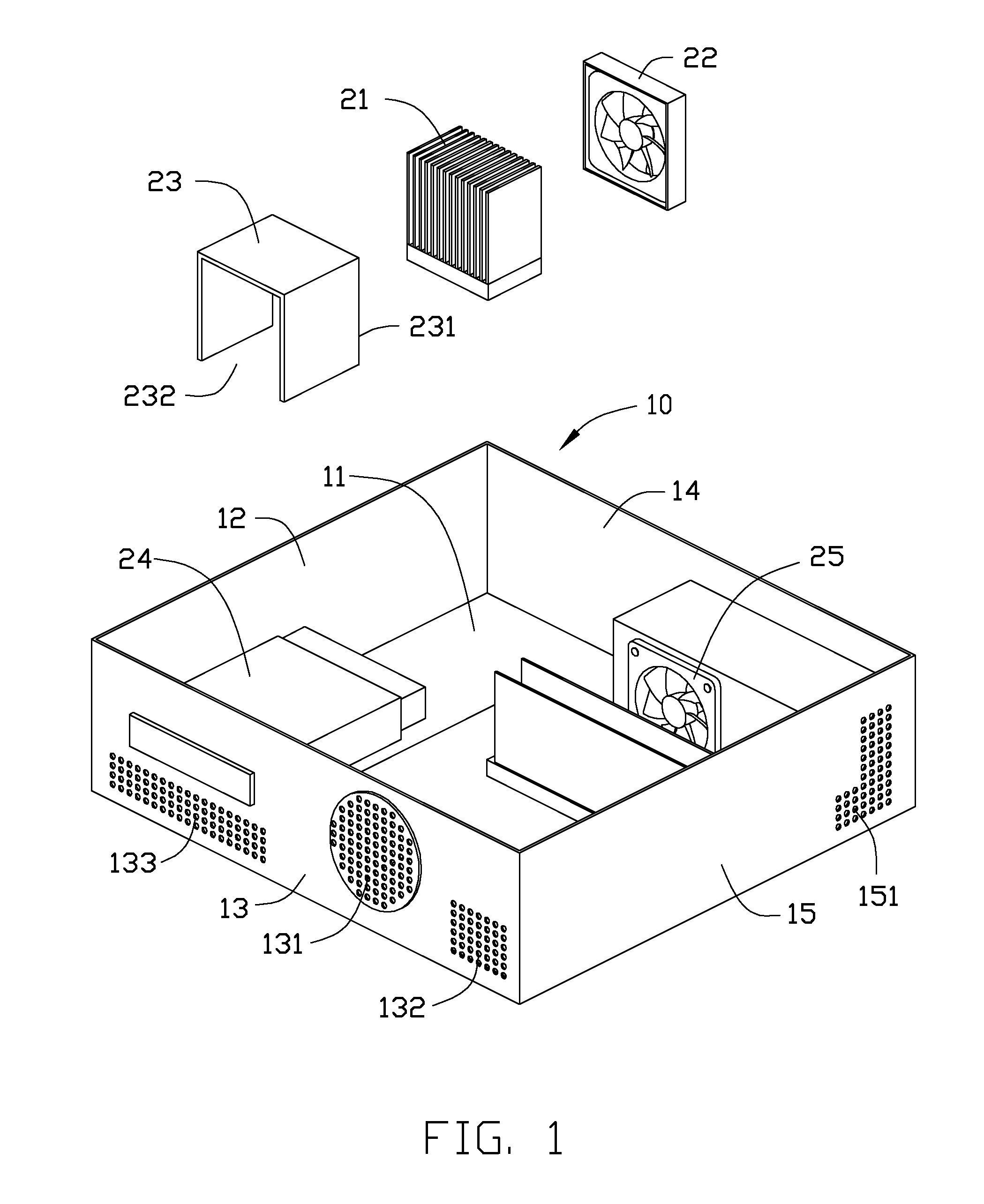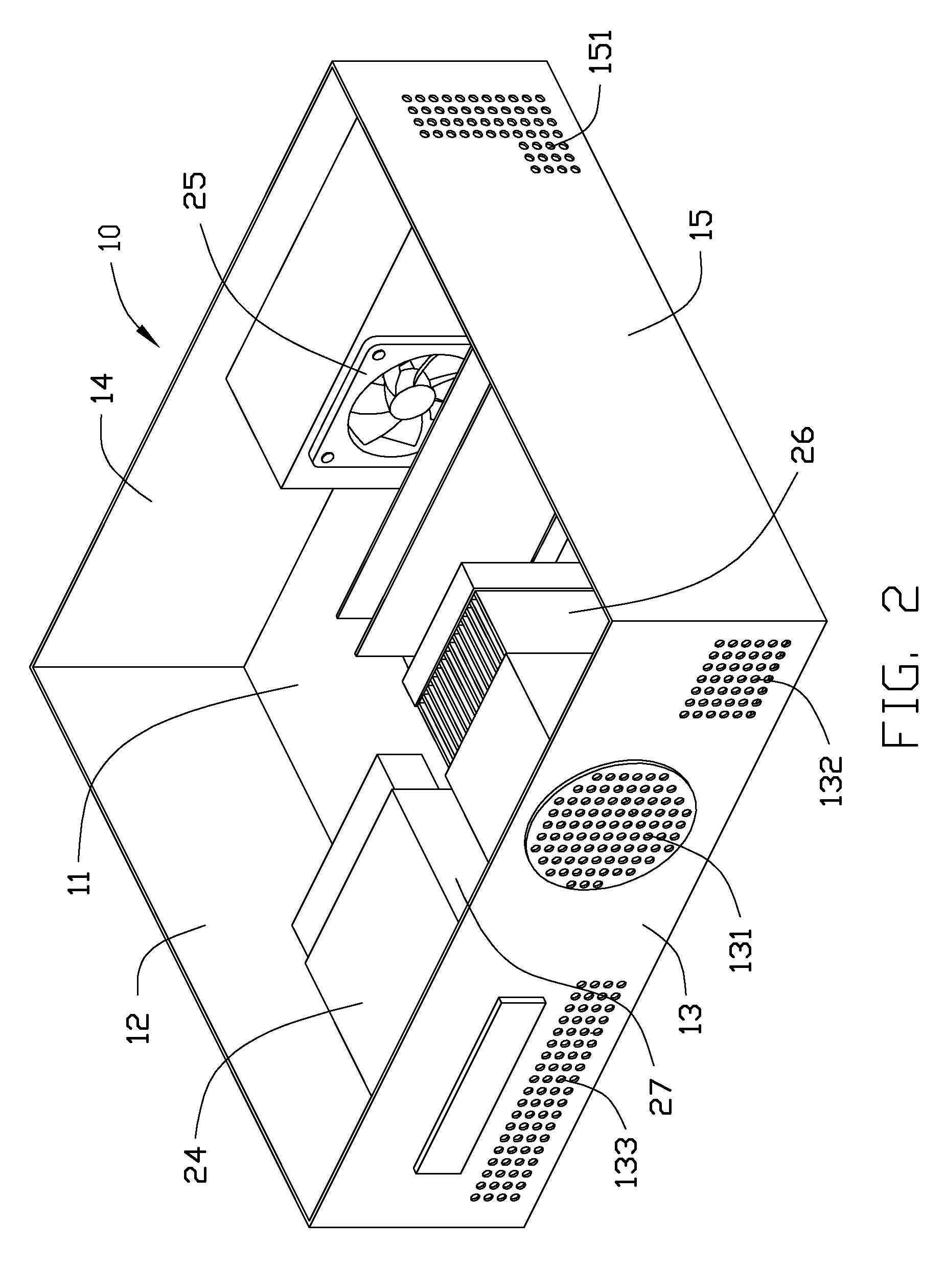Heat dissipation system
a heat dissipation system and heat dissipation technology, applied in the direction of lighting, heating apparatus, electric apparatus casings/cabinets/drawers, etc., can solve the problems of deteriorating the operation stability, damage to the associated electronic components, and heat dissipation
- Summary
- Abstract
- Description
- Claims
- Application Information
AI Technical Summary
Benefits of technology
Problems solved by technology
Method used
Image
Examples
Embodiment Construction
[0009]The disclosure is illustrated by way of example and not by way of limitation in the figures of the accompanying drawings in which like references indicate similar elements. It should be noted that references to “an” or “one” embodiment in this disclosure are not necessarily to the same embodiment, and such references mean at least one.
[0010]Referring to FIGS. 1 and 2, a heat dissipation system for a computer case 10 includes a base plate 11, a front plate 12, a first side plate 13, a second side plate 14 and a back plate 15. The base plate 11 has a motherboard (not labeled) attached. The motherboard is installed with a first heat source (not shown). A heat sink 21 is positioned on the first heat source adjacent to the back plate 15. A first fan 22 is positioned on the motherboard adjacent to a first side of the heat sink 21. An air duct 23 is positioned on the motherboard adjacent to a second side of the heat sink 21. The heat sink 21 is capable of heating air blown from first...
PUM
 Login to View More
Login to View More Abstract
Description
Claims
Application Information
 Login to View More
Login to View More - R&D
- Intellectual Property
- Life Sciences
- Materials
- Tech Scout
- Unparalleled Data Quality
- Higher Quality Content
- 60% Fewer Hallucinations
Browse by: Latest US Patents, China's latest patents, Technical Efficacy Thesaurus, Application Domain, Technology Topic, Popular Technical Reports.
© 2025 PatSnap. All rights reserved.Legal|Privacy policy|Modern Slavery Act Transparency Statement|Sitemap|About US| Contact US: help@patsnap.com



